Image courtesy of CDCR.gov
Folsom Prison, completed in 1880, is one of America’s most notorious penitentiaries. It is infamous not only for its diverse array of inmates but also for the iconic performance by Johnny Cash that brought it into the spotlight. Over the years, it has been a fortress of confinement and a symbol of reform, with most visitors either working within its walls or serving time behind them.
Step behind the iconic guard towers and venture just past the Johnny Cash Trail to join us on a journey through Folsom Prison’s storied history and what it would be like if you were an inmate during its beginnings.
Arriving at Folsom State Prison
Imagine it’s the early 20th century, and you've just been convicted of a felony. After a swift trial, your destination is set: the infamous Folsom State Prison. Tough luck indeed, but what awaits you behind those imposing walls is a world steeped in history, intrigue, and stories of both despair and resilience. Welcome to Folsom.
The first thing you’ll see from your transport truck is the larger-than-life front gate and guard post towers that rule the prison entrance.
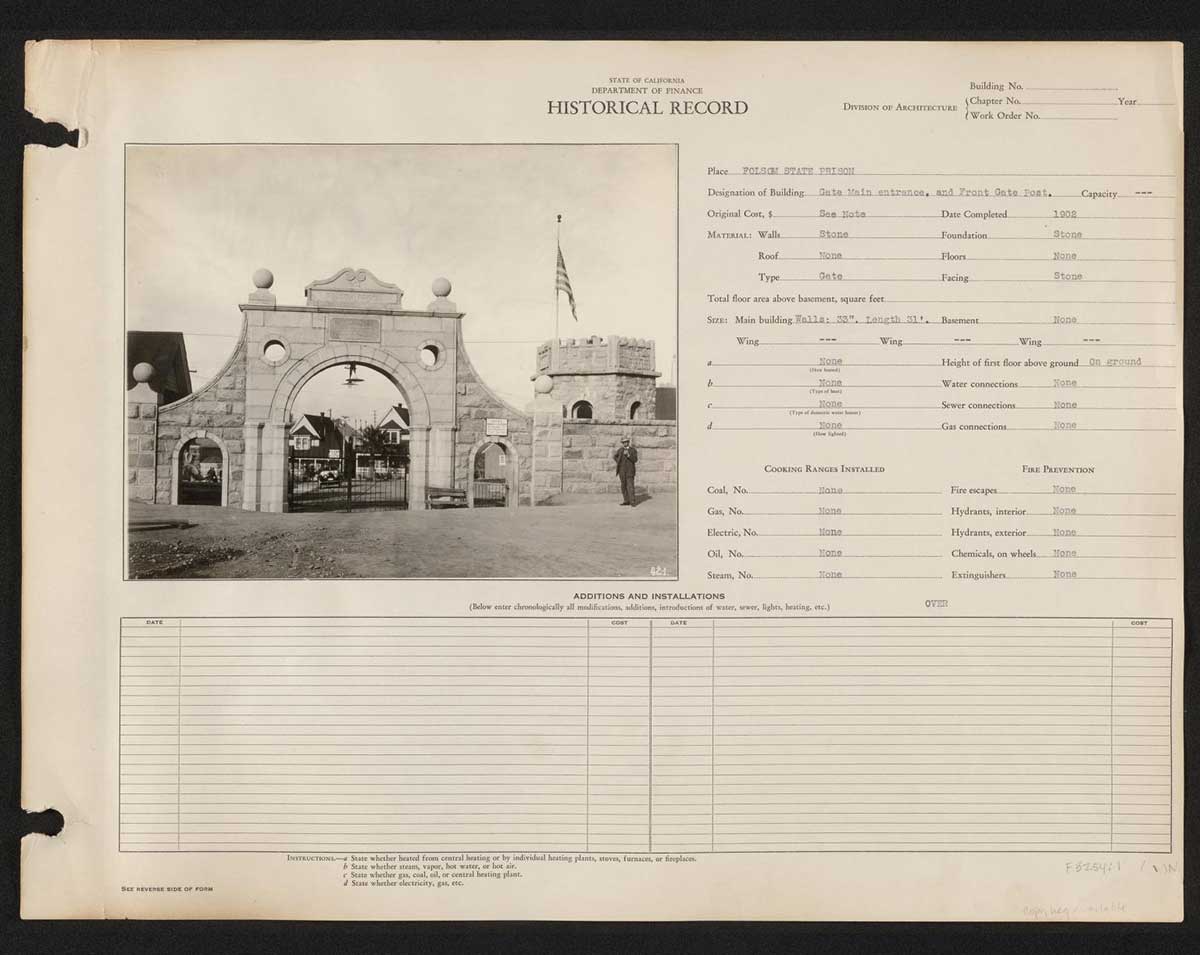

(Fun fact: Folsom Prison didn’t have its iconic granite walls until 1923, 40 years after it opened. Despite its lack of walls, a newspaper editor wrote in 1893, “For a prison without walls, it is doubtful if any prisoner placed in Folsom Prison will ever escape. … It is likely he’ll remain there until the term of his sentence has expired.”)
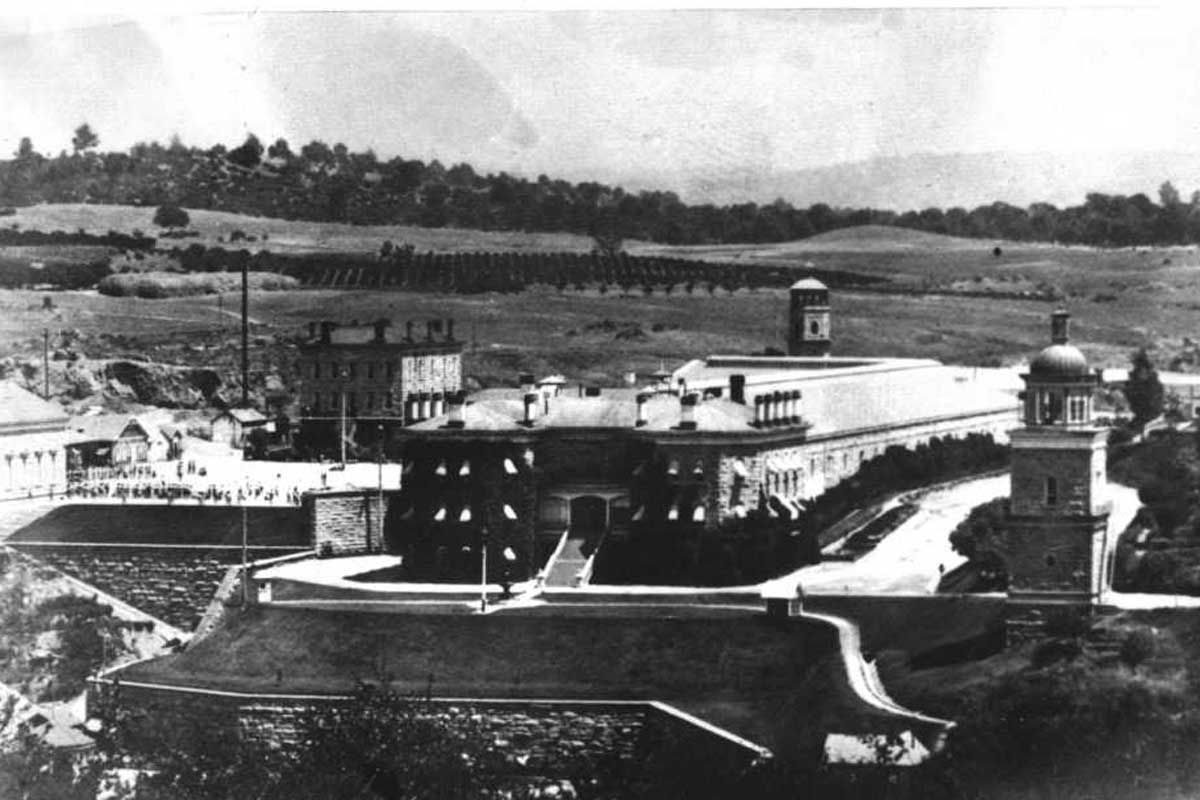 Courtesy of KRCA 3
Courtesy of KRCA 3
After hopping off the bus, you would meet Lt. George C. Jennings, who would register you, review the rules of conduct, and provide your basic prison properties and clothing. Next, you would visit the Bertillon Room, where, after a bath, shave, and haircut, you would be photographed, measured, fingerprinted, and documented.
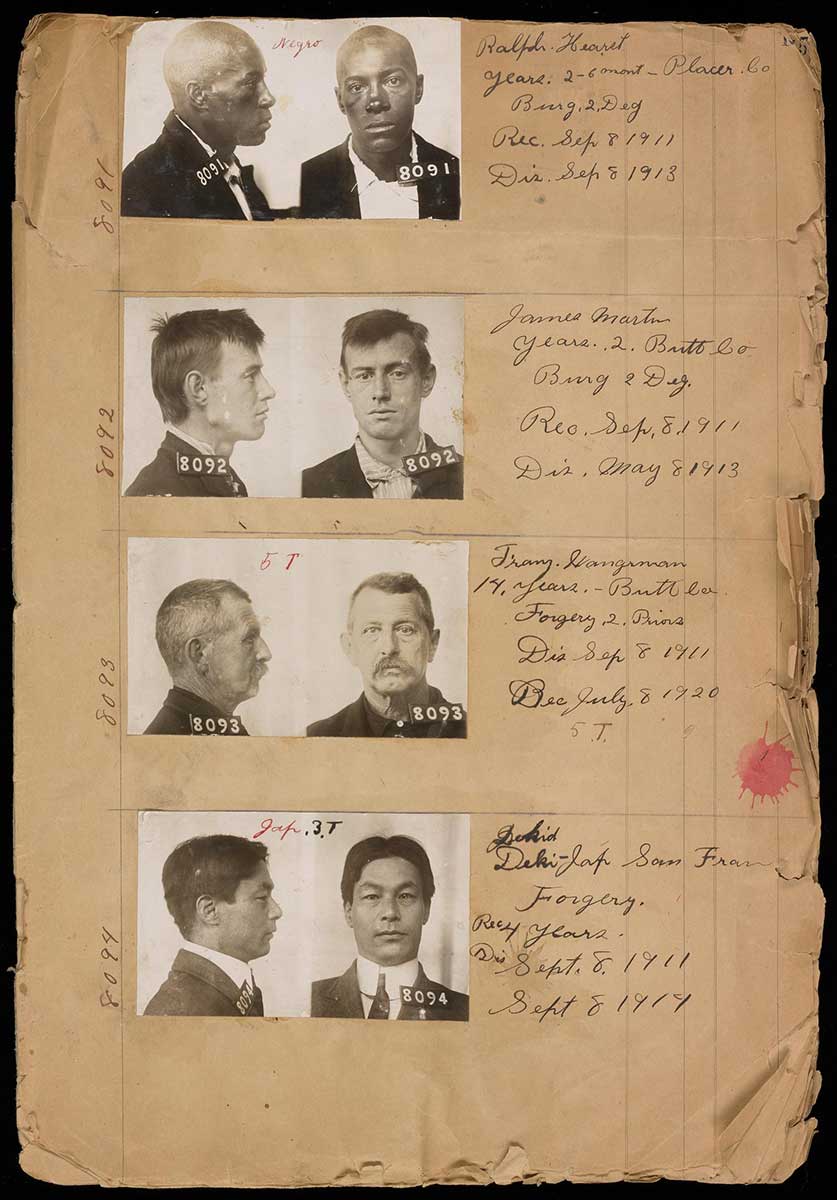
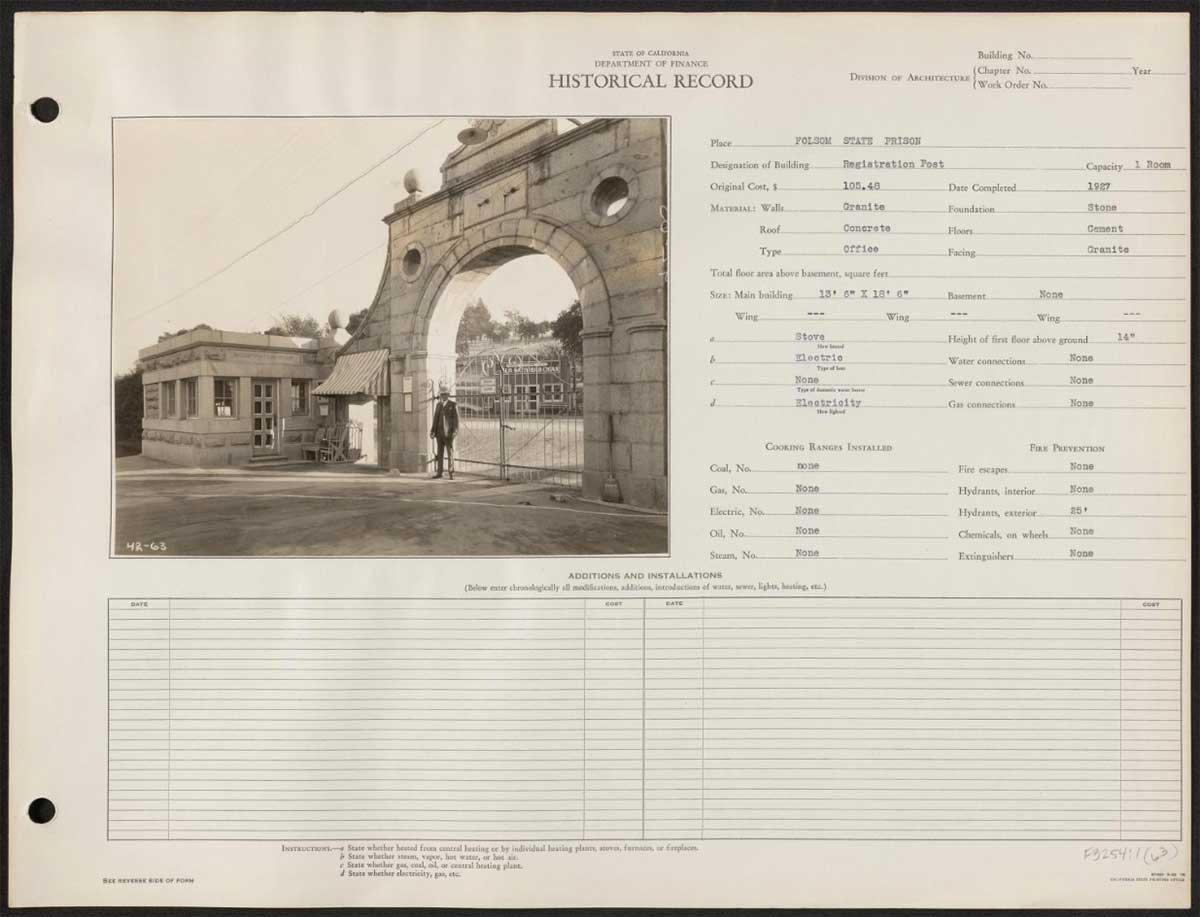
Before entering the yard, you undergo a final medical examination that documents your age, marital status, family history, previous medical history, venereal diseases, habits, and any present illnesses.
Afterward, you receive a rule book containing suggestions from the warden, prison rules, and schedules for work and conduct. Finally, you are transferred to either the ‘Main Building’ or the newly constructed ‘Cell House.’
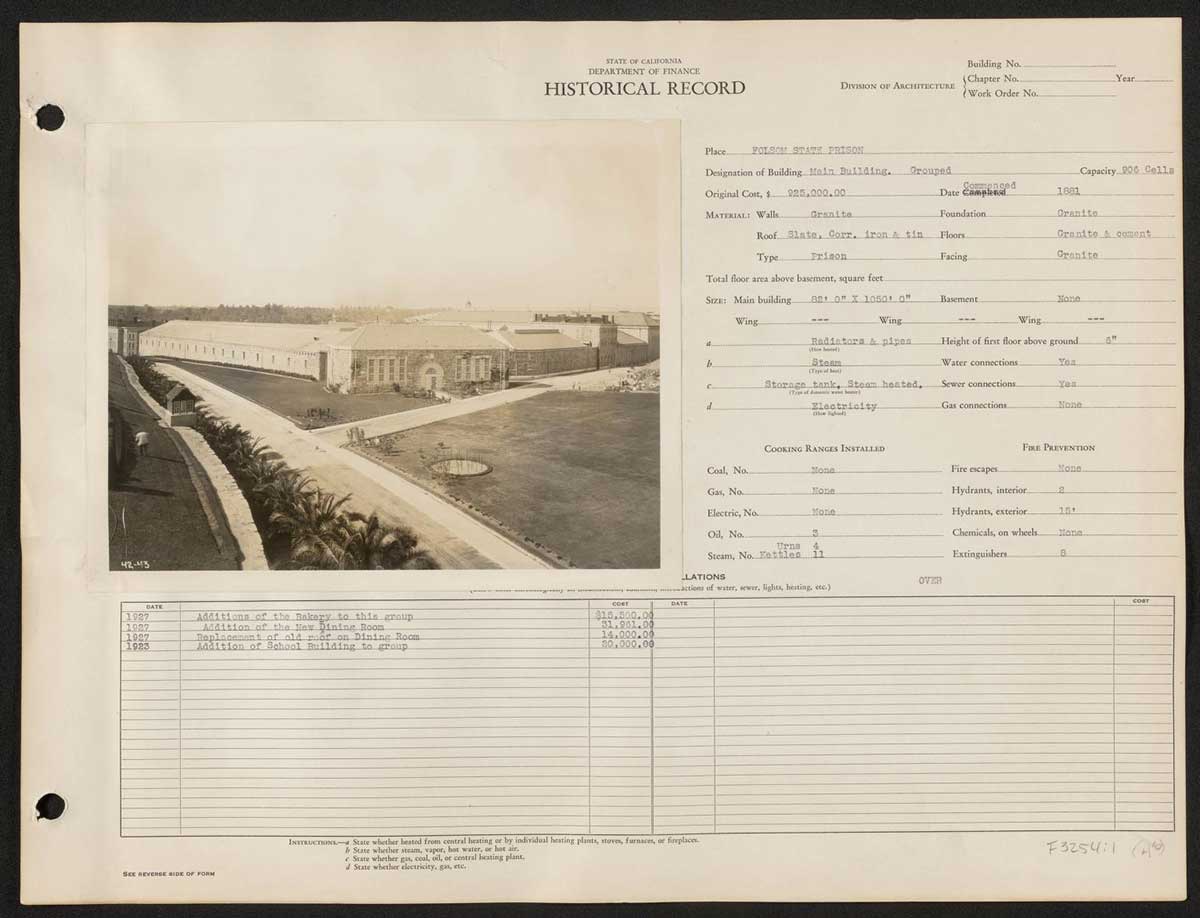
A Tour of Your Cell and the Facilities
Their new cell building, completed in 1913, contained over 450 modern steel cells. In your cell, you would find a washbowl, running water, a toilet, and nice sanitary iron beds. Compared to the newer buildings you’ve heard of at San Quentin, this building feels brighter and better ventilated. It’s almost a small mercy in your new reality, especially since it was the only prison in the country with electricity at that time.
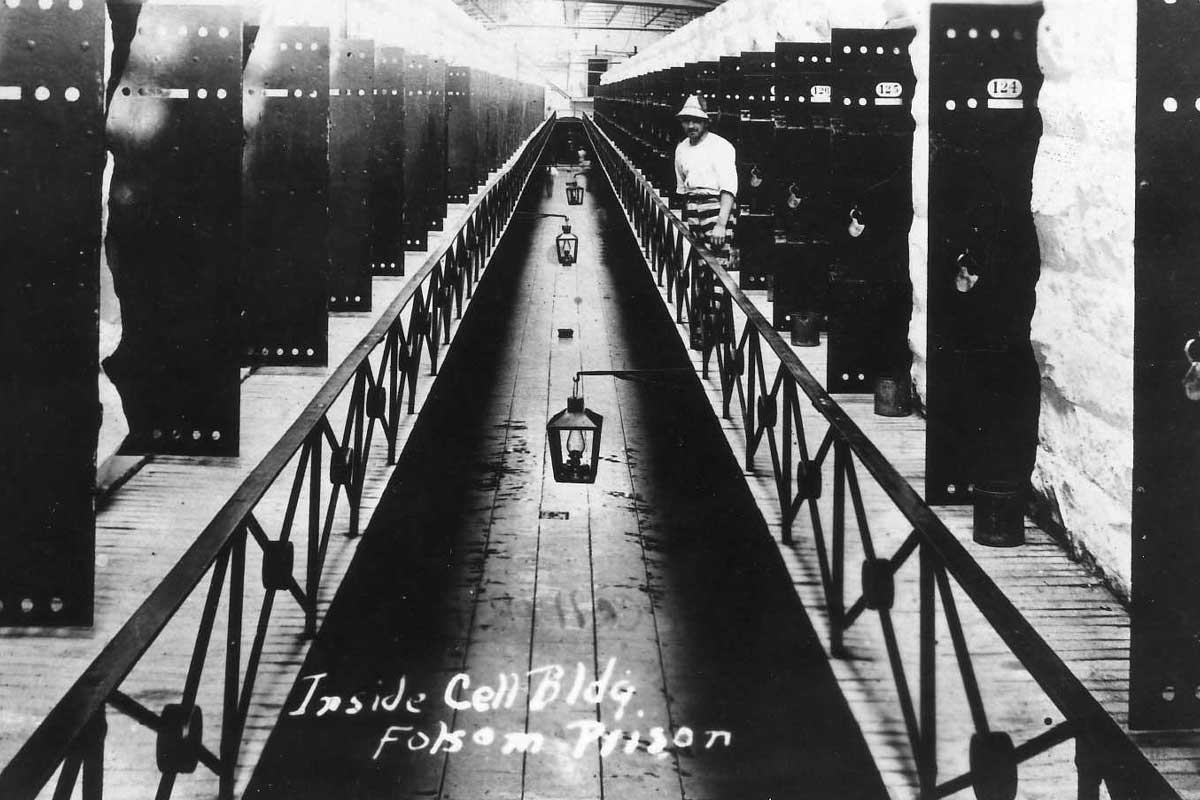 Courtesy of KCRA 3
Courtesy of KCRA 3
 Courtesy of KCRA 3
Courtesy of KCRA 3
Next, you find yourself in the Prison Mess, an extension of the main cell building. The dining room greets you with old wooden tables and benches, where prisoners sit facing each other. Despite its recent paint job and cleanliness, the kitchen’s poor equipment and inconvenient layout are hard to ignore.
You then enter the Bath House, a solid concrete structure. It boasts dressing rooms, showers, and a plunge pool about 15 by 25 feet in size. The chlorinated river water, frequently changed, adds a faintly familiar scent. Clean clothes are issued weekly, and while you’re required to bathe once a week, the option to wash more often is a small comfort.
In stark contrast, the laundry is a beacon of modernity. Well-equipped, well-lit, and ventilated, it stands ready to handle the institution’s demands, almost making you forget where you are for a moment.
Finally, you step into the Chapel. The granite block building forms one large, bare room. One corner serves as a library, storing and issuing books, while the rest of the space is used as an office for the educational director, school classes, and religious services. The room is bare and uninviting, with only old chairs and tables scattered around.
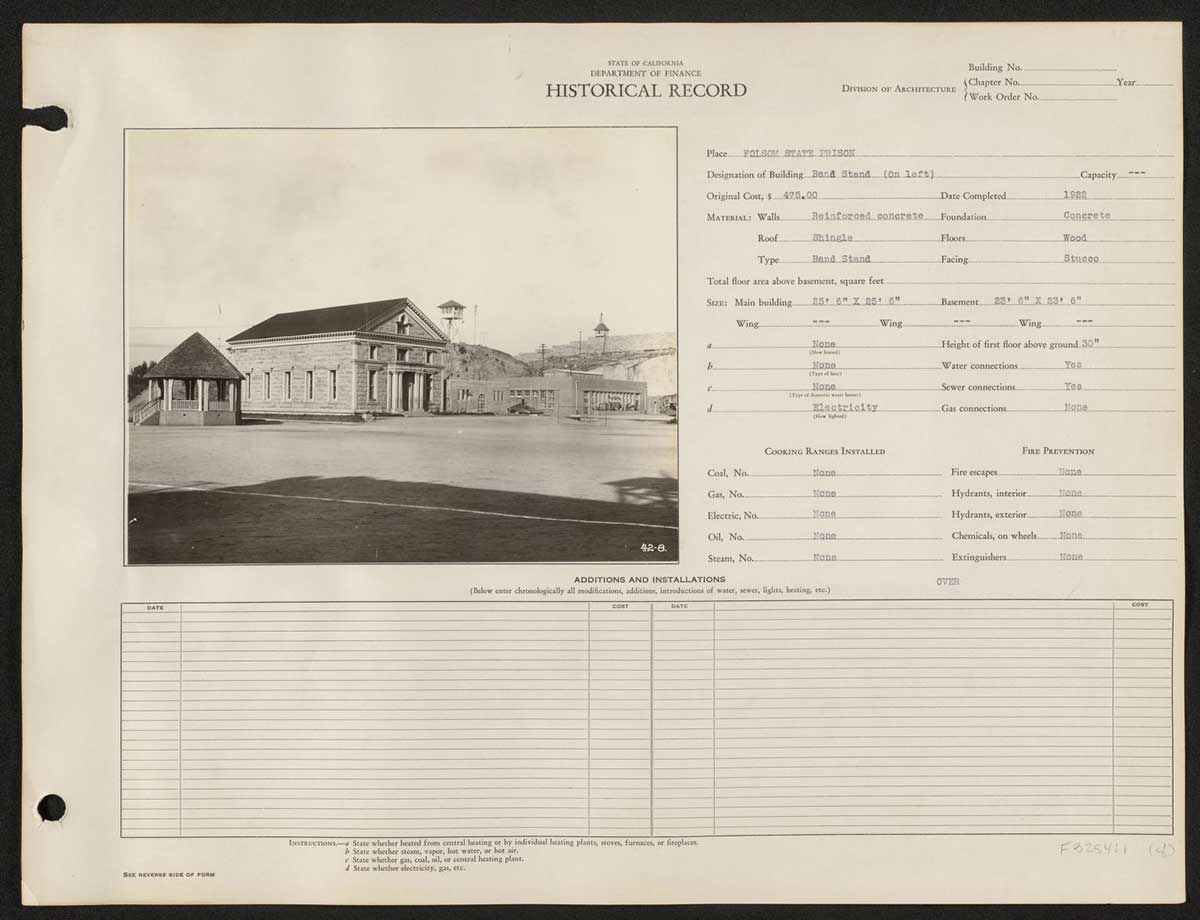
As you continue your tour through Folsom State Prison, you come across the School Room and Assembly Hall. This building will be connected to the main cell house, allowing prisoners to move between buildings without having to step outside. For now, all entertainment is held in the dining room during daylight hours.
Next, you see the Administration and Hospital Building. The administrative offices occupy the front, while the hospital is located at the rear of a building attached to the main cell house. This arrangement allows direct access to the hospital from the cells. In the basement of this building, you find the shoe and tailor shops and the commissary department.
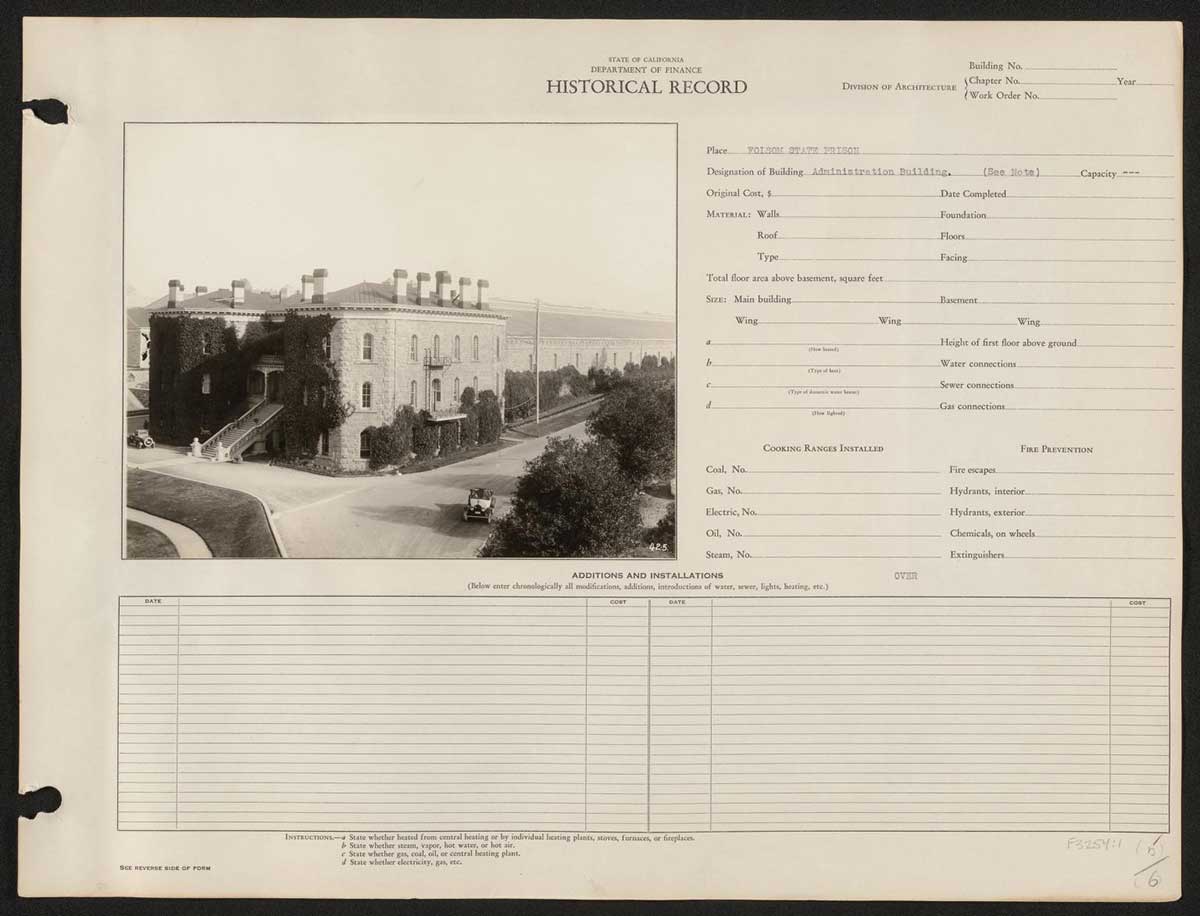
You then make your way to the Shop Building, a well-constructed concrete structure housing various workshops. Here, the carpentering, painting, tinning, and plumbing shops are well-equipped to handle all necessary work.
Finally, you reach the Power House, a large stone building located on the canal adjoining the river. In years of average rainfall, this facility generates enough power to supply the entire institution's needs.
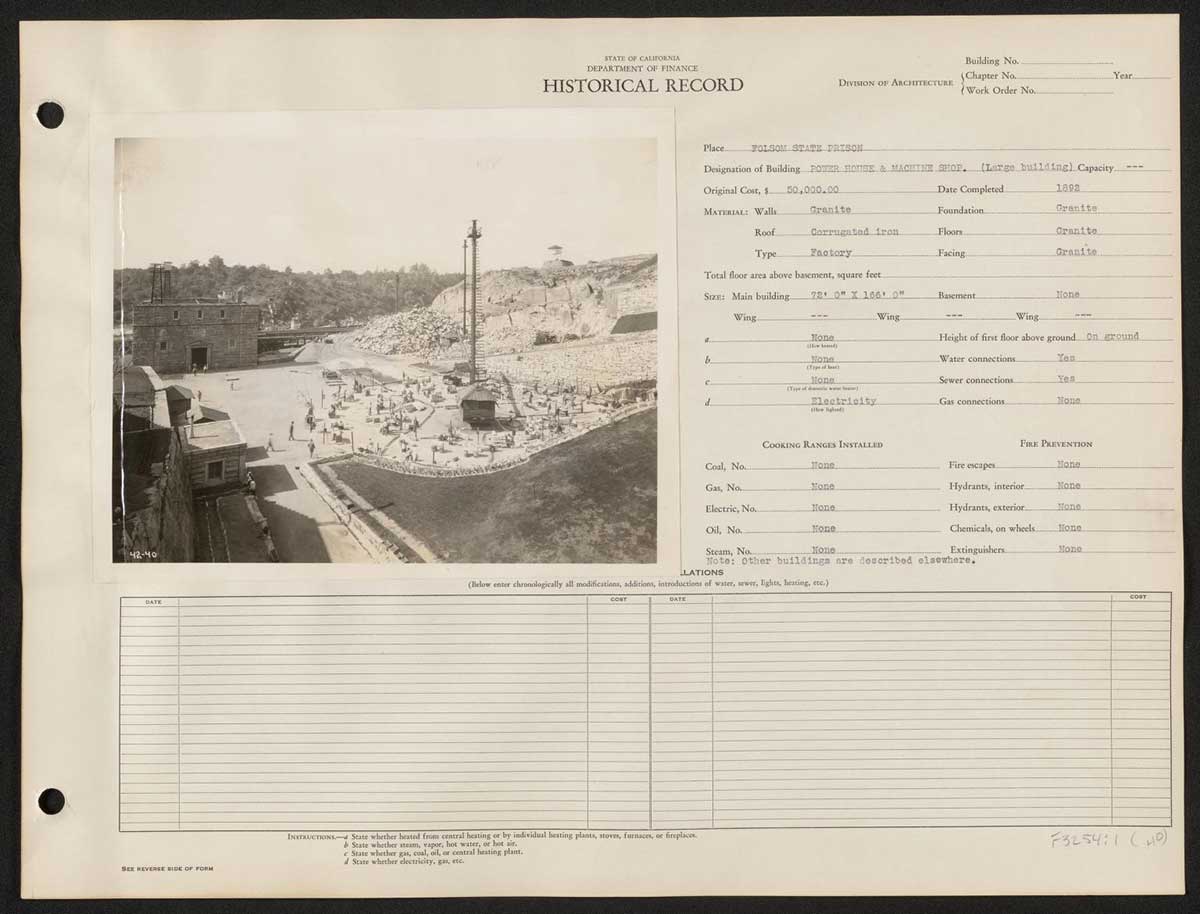
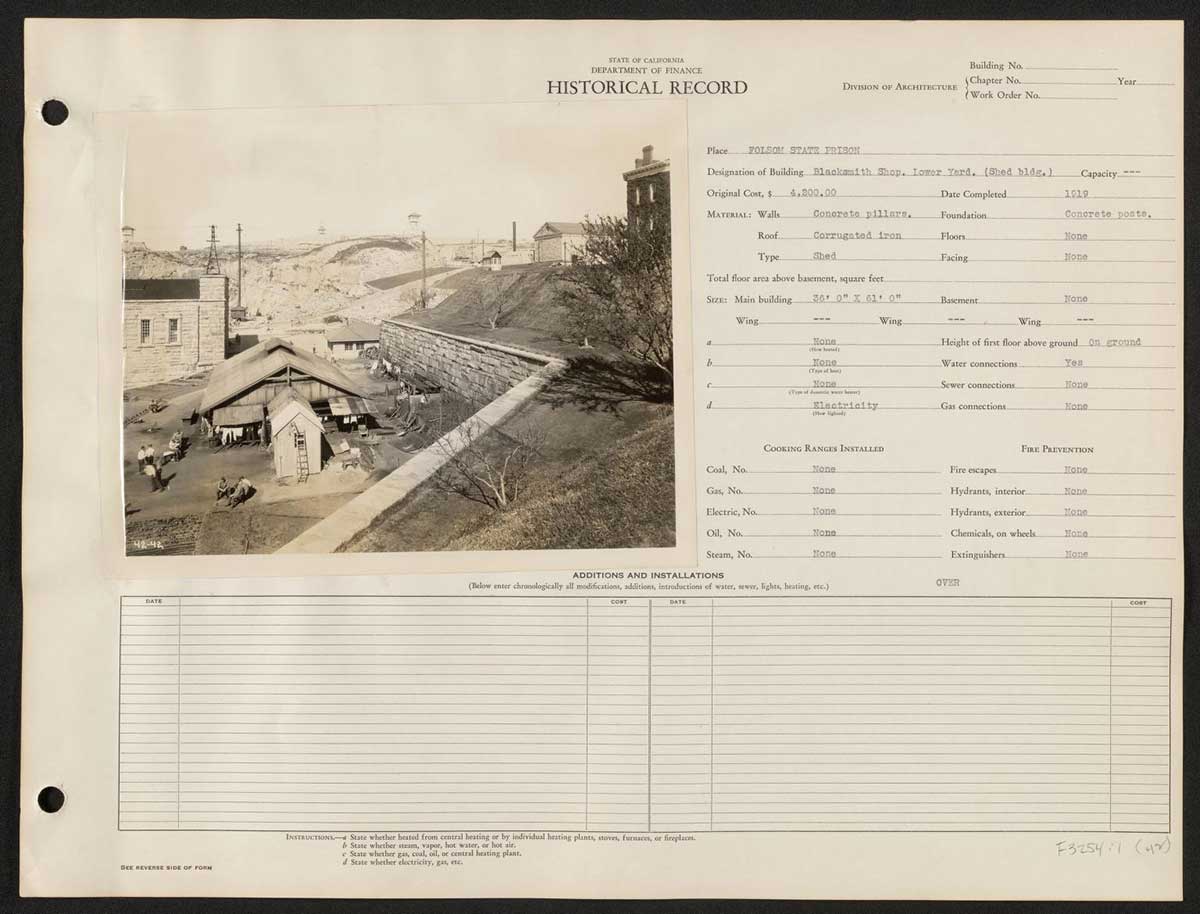
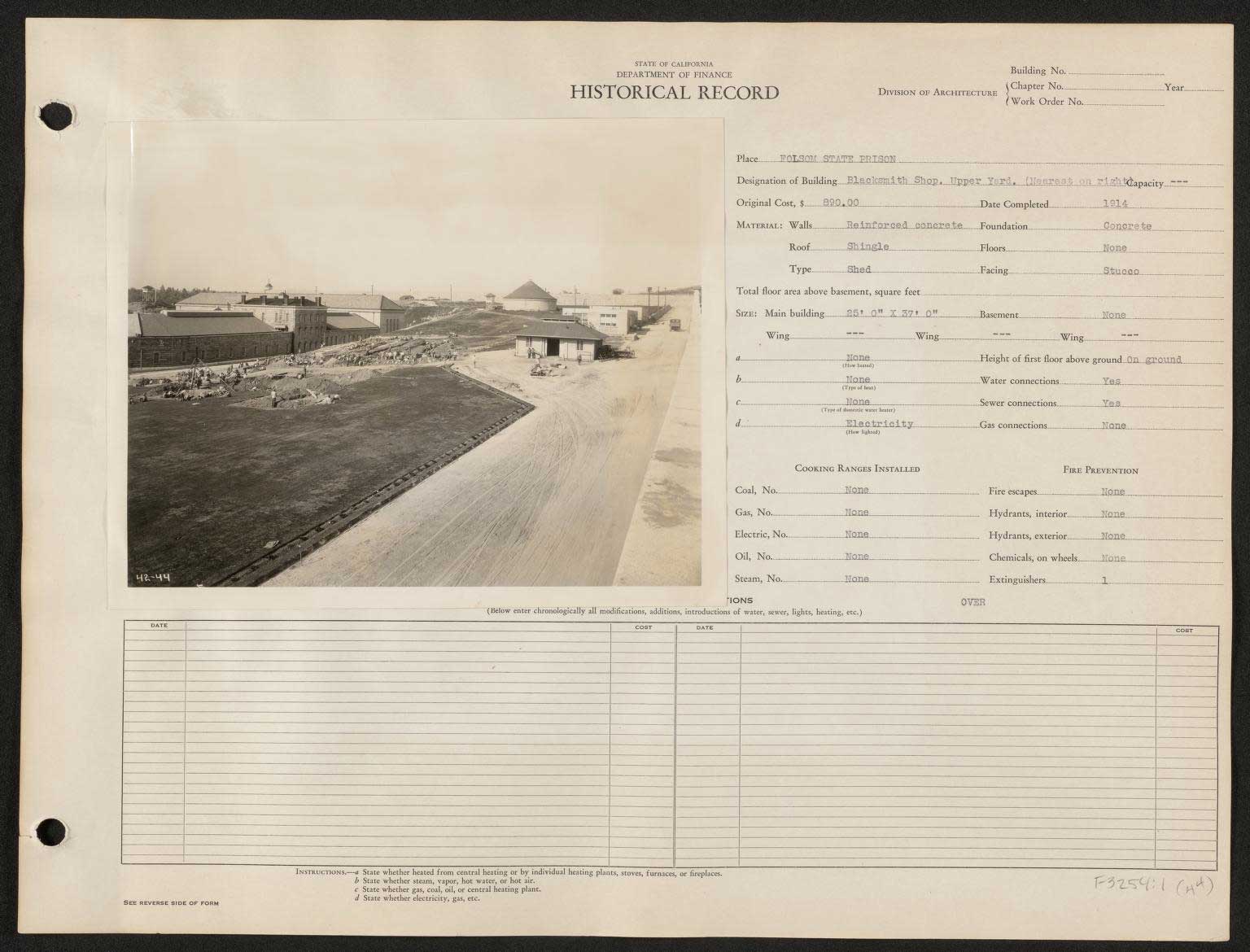
Employment
As a new inmate at Folsom State Prison, there were several different options for work assignments around the complex. Below are the work assignments of prisoners from a 1921 Folsom State Prison report:
Of particular note are the six bed-makers and five officers and guard barbers assigned to the Captain’s Department. In the Commissary, one inmate is part of the coal gang, while another works as a butcher.
The Engineer’s Department:
- 30 inmates are assigned to the blacksmith’s shop
- 2 work on the railroad
- 4 are involved with the tramway
- 1 works in the sawmill
- 2 are assigned to the ice plant
- 2 Manage the telephone operations
In the Farm and Dairy section, four teamsters and eight scavengers work diligently. Six inmates are assigned as whitewashers in the Turn-Keys Department, keeping the walls clean and presentable.
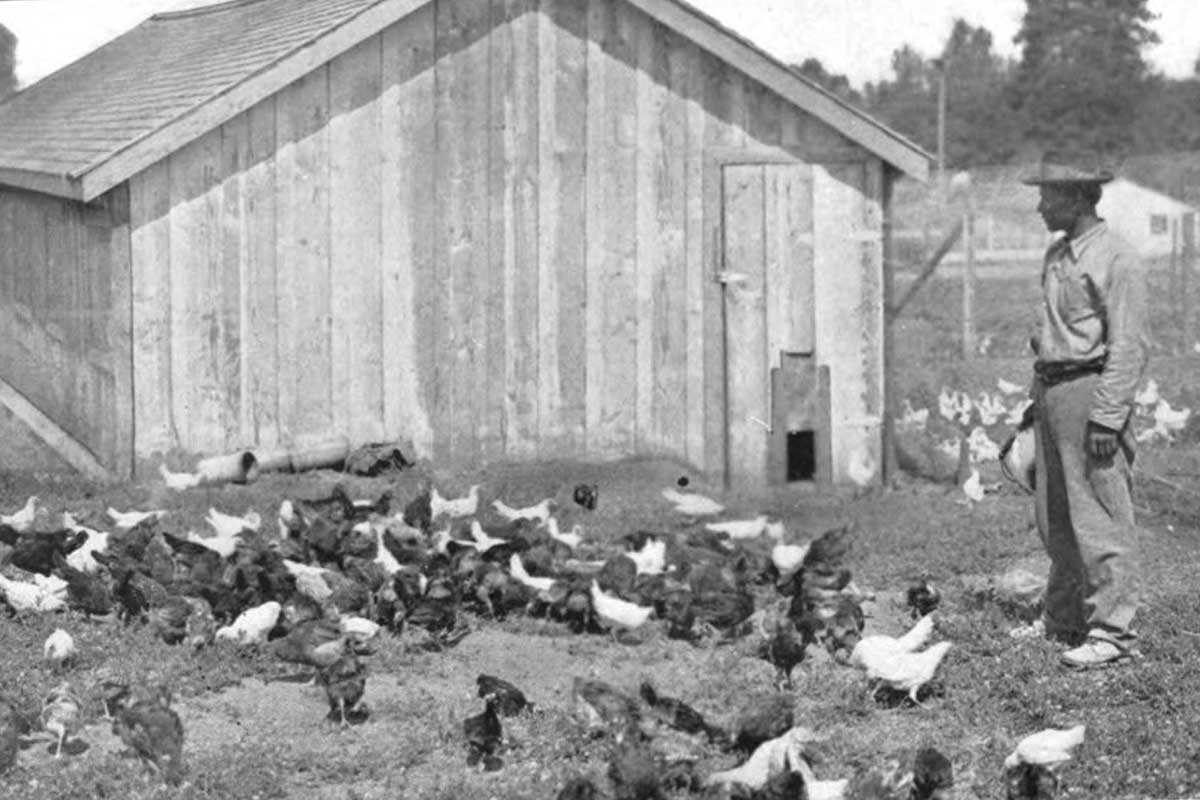 Courtesy of CDCR.gov
Courtesy of CDCR.gov
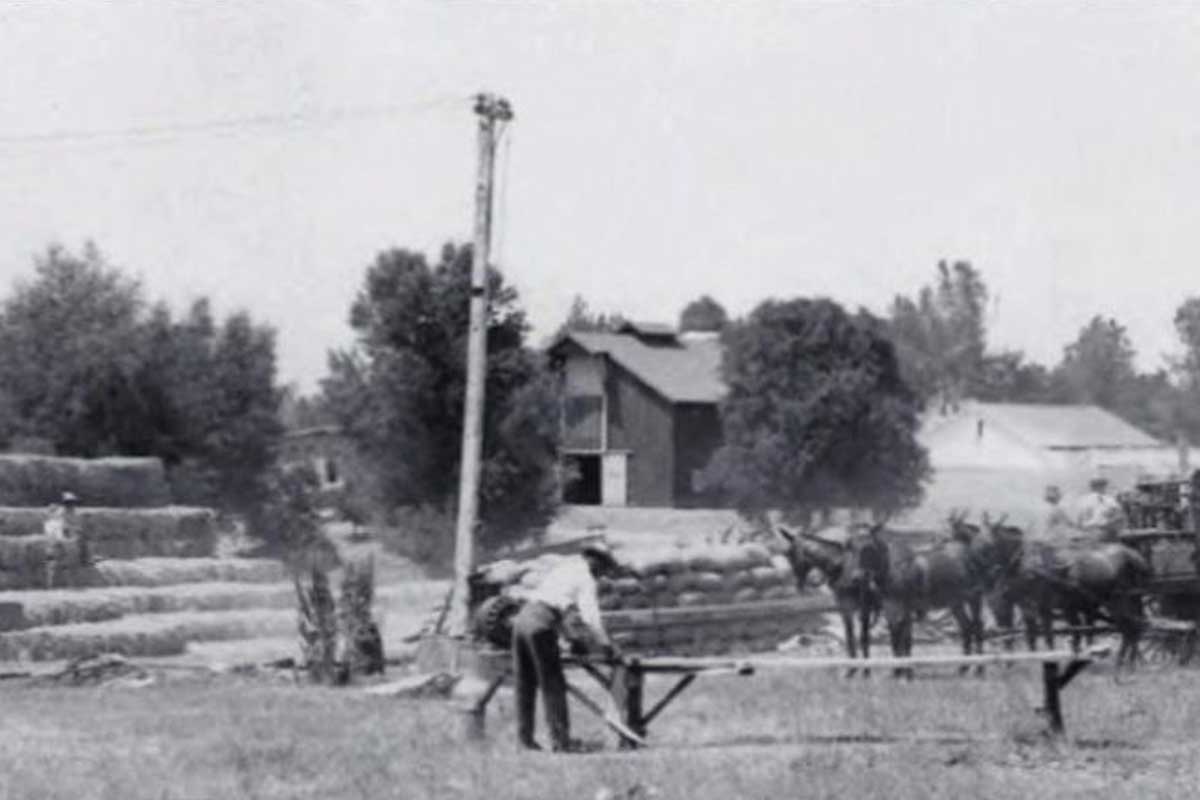 Courtesy of CDCR.gov
Courtesy of CDCR.gov
Under Prison Improvements, a significant number of inmates, 31 to be exact, are assigned to the Wall Gang. These inmates are tasked with the ongoing construction and maintenance of the prison wall, which wasn't completed until two years after the 1921 inspection report.
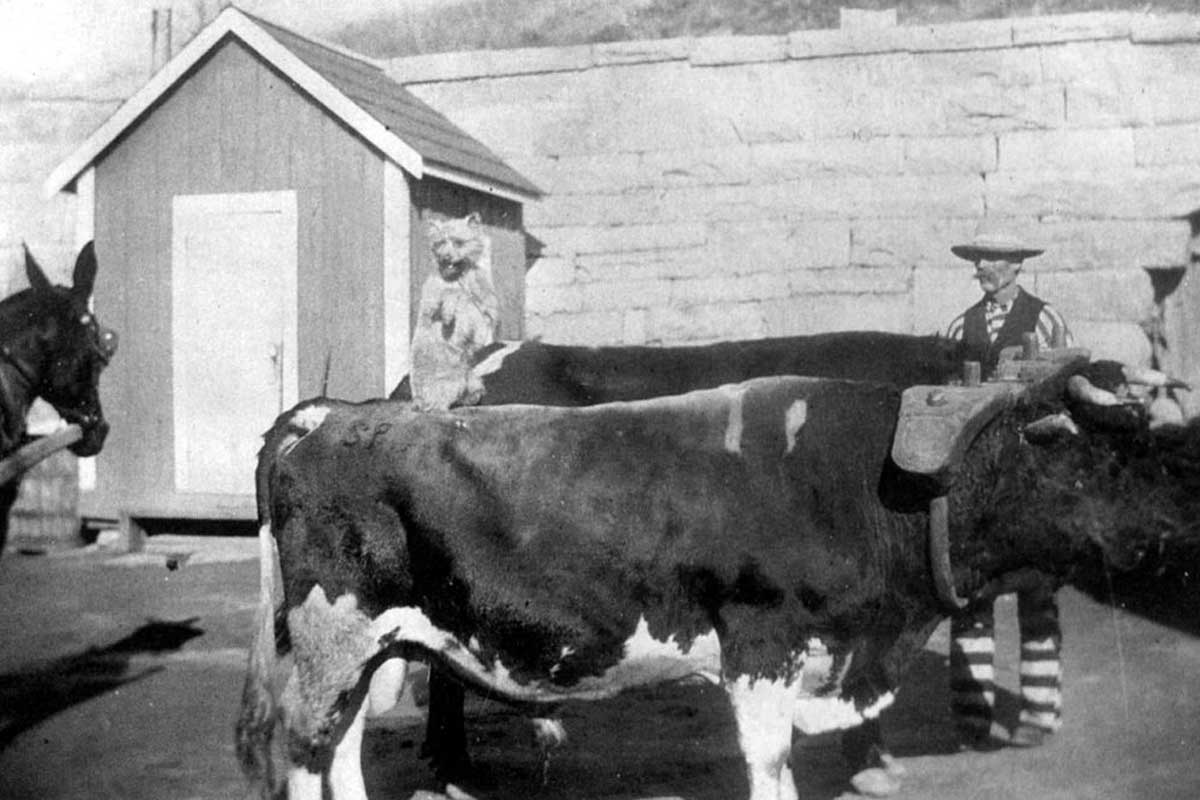
Did you know?
All California license plates are made by inmates at Folsom State Prison. The factory was established in 1930 and averaged about 50,000 plates a day. Since 1947, the factory has been the only manufacturing facility of license plates in California.
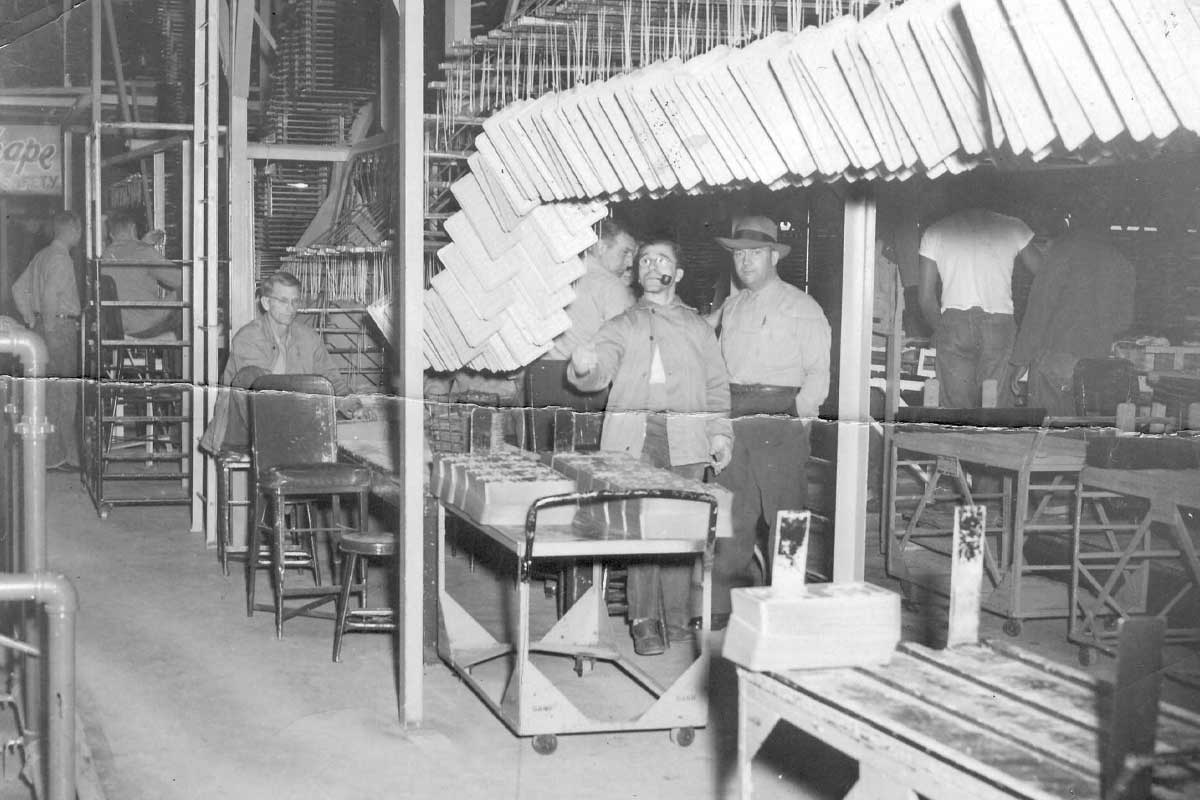 Courtesy of KRCA 3
Courtesy of KRCA 3
Recreation
As you adjust to life at Folsom State Prison, you'll find that a reasonable amount of recreation is encouraged as part of the prison policy. Baseball games are a highlight, played on Saturday and Sunday afternoons. Prisoners have their own teams, organized into leagues and managed by inmate captains and committees.
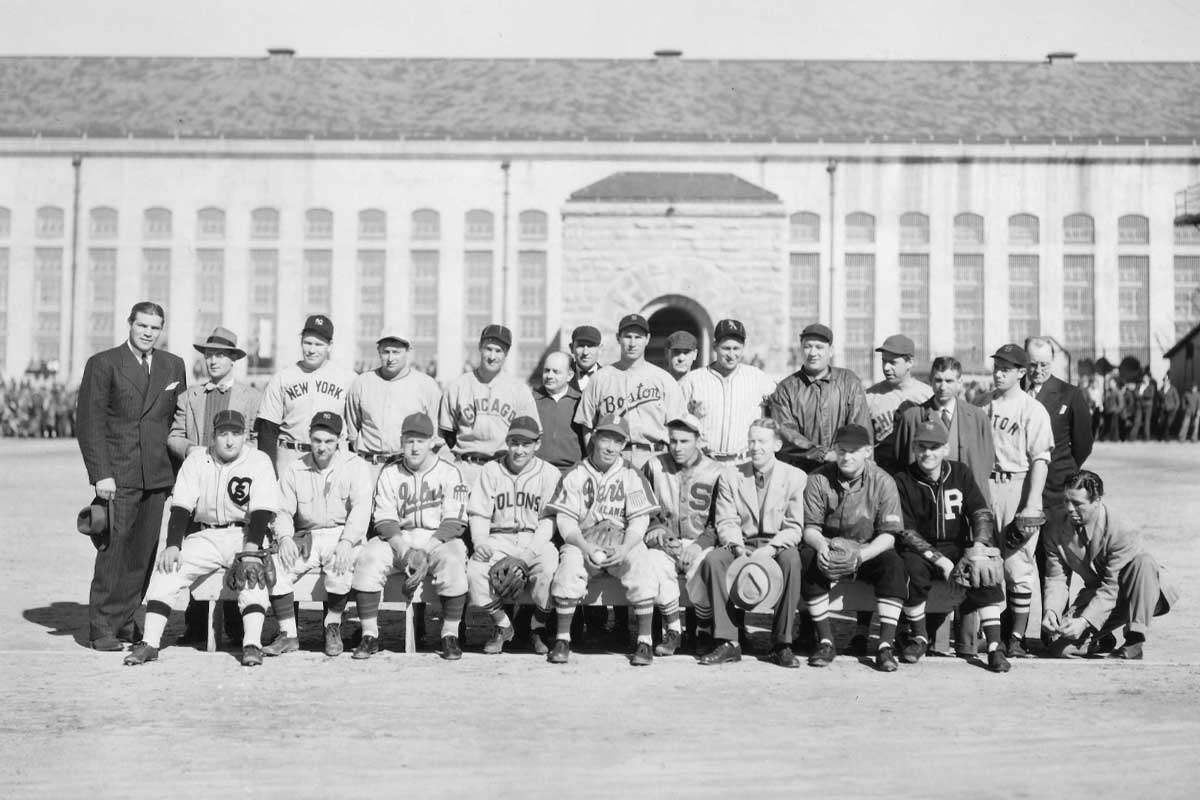
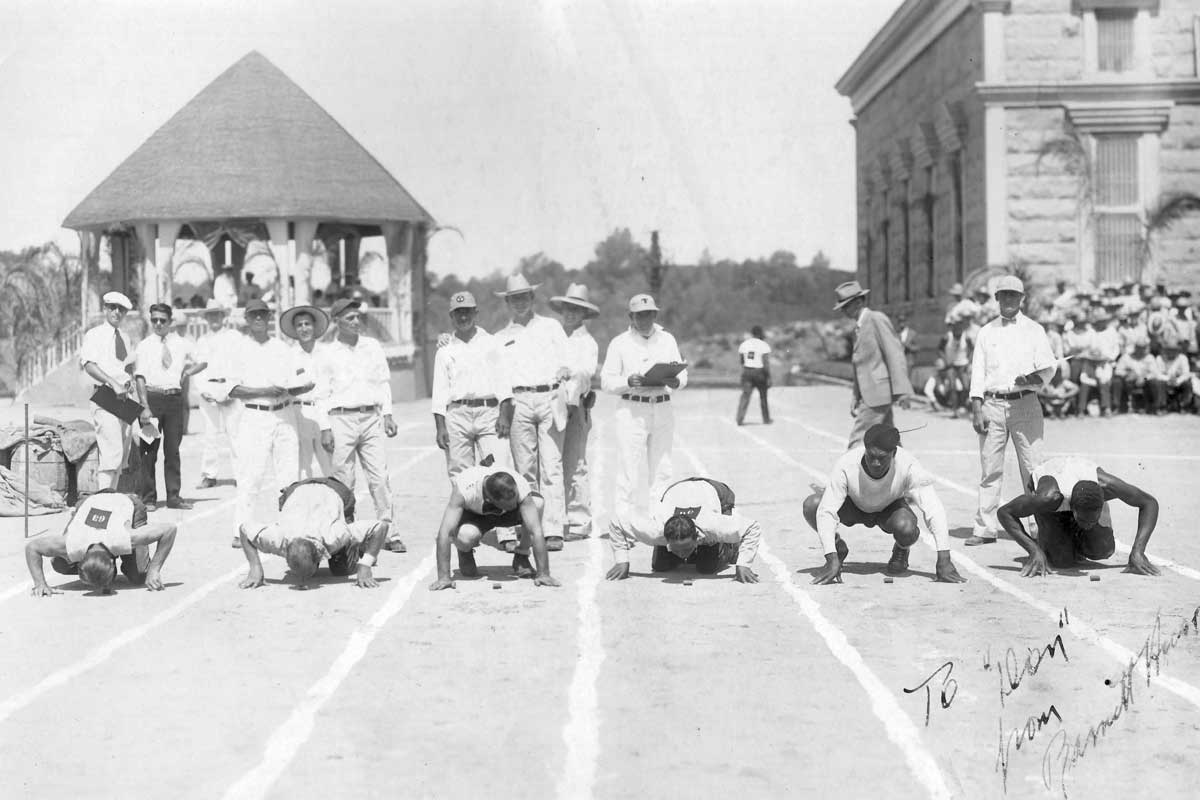
The prisoners also transform every available spot of ground within the prison into small, intensively cultivated individual gardens. Many of these gardens are only a few feet in size, yet they are objects of keen interest and pride among the inmates.
Twice a month, the dining room is converted into a makeshift theater where moving pictures are shown, providing a brief but welcome escape from the daily routine.
Parole and Discharge
Before parole is granted, thorough assessments are made, including reports on your conduct and physical condition. The committing judge, local district attorney, and your former employer are consulted. To qualify for parole, you must have definite employment and a reputable sponsor who will report on your conduct and work.
Anticipation of parole after serving part of the term helps maintain prison morale and discipline. Parole does not shorten your sentence but allows you to leave prison and adjust to normal life under supervision, ensuring a smoother reintegration into society.
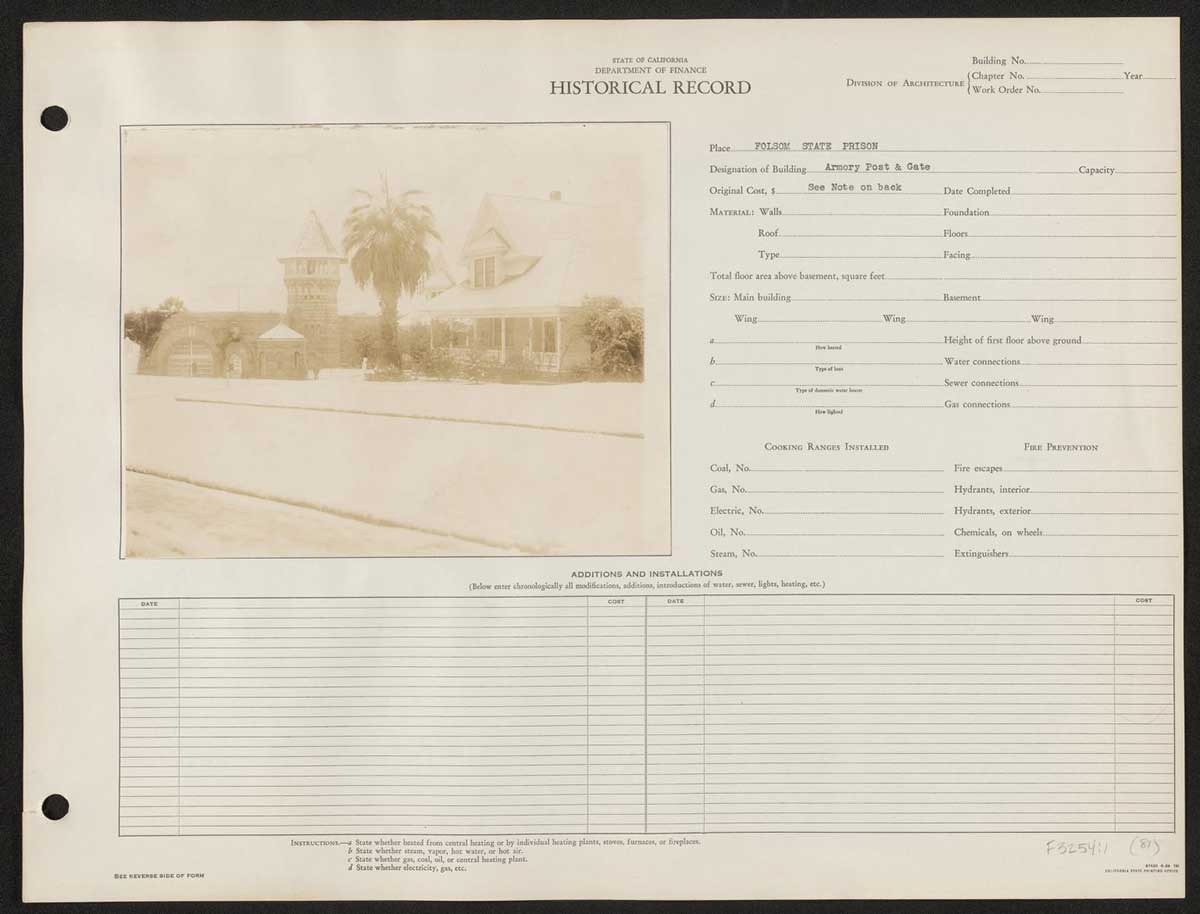
Want to learn more about Folsom Prison?
Check out our other articles about this iconic institution